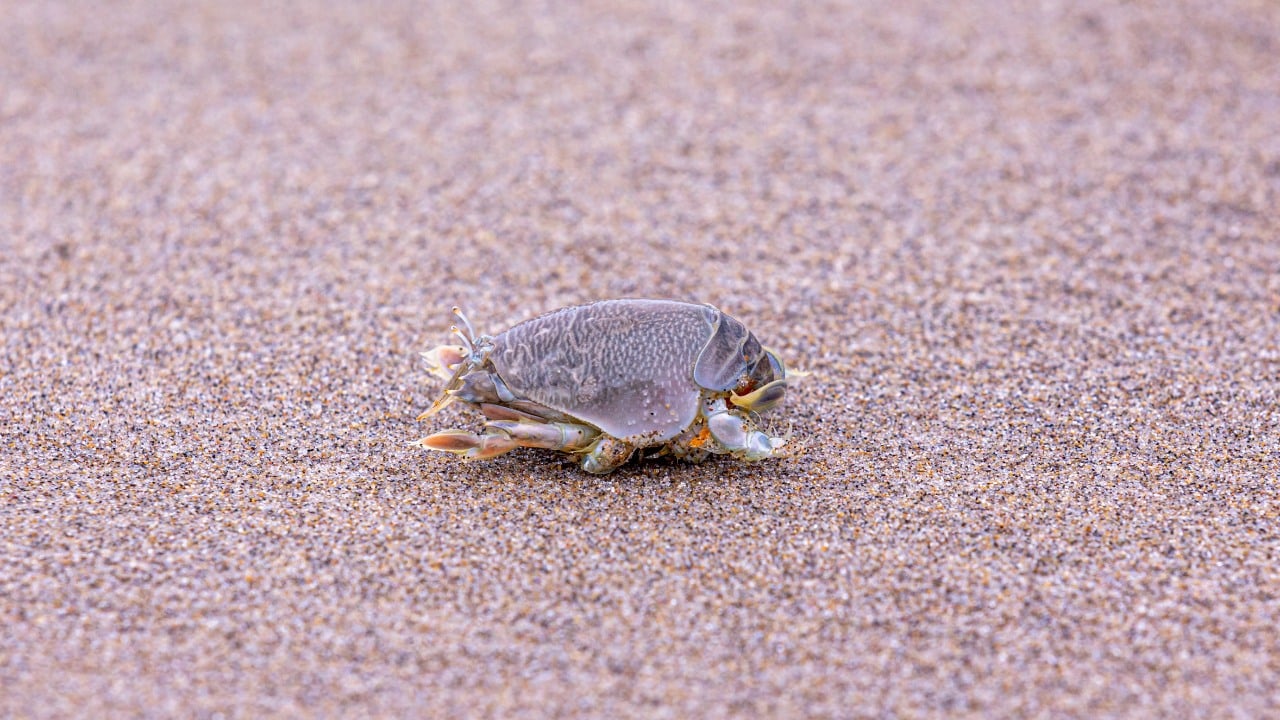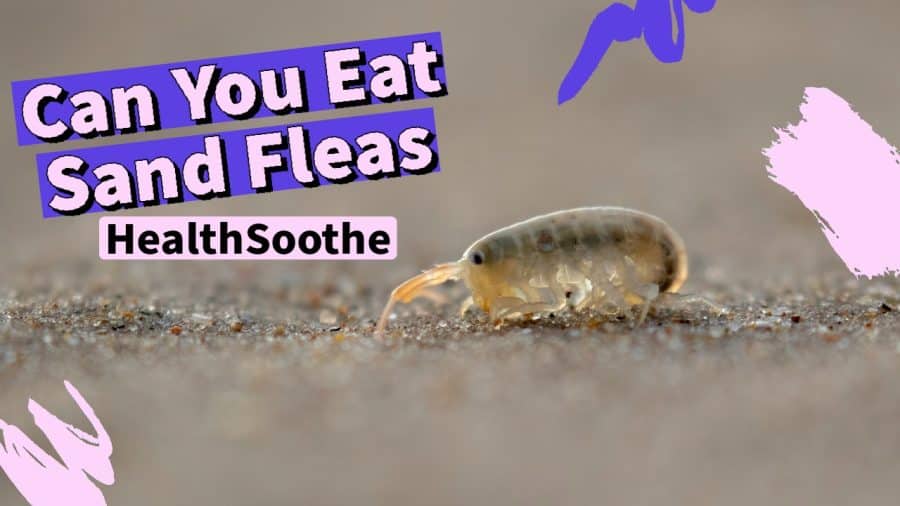Have you ever strolled along the beach, feeling the warm sand between your toes and the salty breeze against your skin? As you explore this coastal paradise, you may come across tiny creatures scurrying about in the sand - sand fleas.
Quick Facts About Sand Fleas
Sand fleas are known by several names like beach fleas, sand hoppers, or mole crabs, and they are considered to be excellent fishing bait and are extensively used by fishermen to increase their catch. But here's a thought that might pique your curiosity: can you eat sand fleas?
In this fascinating blog post, we'll dive into everything you need to know about whether or not it's possible to satisfy your culinary cravings with some crunchy sand flea delicacies. So, keep reading to learn more about these fascinating crustaceans.
What Are Sand Fleas?
Sand Fleas (Emerita), also known as sand hoppers or beach fleas, are small crustaceans that can be found in sandy coastal areas. Despite their name, they are not actually fleas but rather a type of amphipod.
These tiny creatures are pointy-headed with a rounded tail. They have elongated bodies that can range in size from just a few millimeters to about an inch long. Despite their little size, sand fleas have a very strong exo-skeleton that are used to dealing with tidal waves and currents from the ocean.
Aeons ago in the ancient Greek, sand fleas were used as a form of medicine to treat a wide variety of illnesses and diseases, but in today's world, only a small fraction of their medical relevance is known.
Sand fleas are well-adapted to life on the beach and spend most of their time burrowing into the sand just as their name implies. They feed on organic matter and micro-organism that they find in the sand, using their specialised mouthparts to scrape up food particles.
These marine creatures play an important role in coastal ecosystems by helping to break down decaying matter and recycling nutrients back into the environment. They also serve as prey for larger animals such as birds, fish, and other crustaceans.
Can You Eat Sand Fleas?
Despite where they live and their name, which may convince those who are unfamiliar with the species that they are in fact an insect, sand fleas are perfectly edible which means you can actually eat sand fleas. These small creatures may not seem appetizing at first glance, but believe it or not, they are actually consumed by some people around the world.
In many coastal regions, particularly in Asia and Latin America, sand fleas are considered a delicacy and are often cooked and enjoyed as a snack or part of a meal. In certain cultures, however, sand fleas are sometimes used as bait when fishing or crabbing.
But before you head out to gather up these critters for your next seafood feast, it's important to always exercise caution before consuming it. Because sand fleas are known to spend most of their time buried in the sand, it is advisable to always prepare and cook it thoroughly before eating so as to get rid of any potential contamination or parasites which may be present in its body.
While not everyone may have the stomach for it, eating sand fleas is indeed possible and has been enjoyed by many cultures throughout history. As said earlier on, just make sure to properly clean and cook them before consuming it. Don't worry, we'll cover how to prepare and cook them thoroughly later on in this article and also what they taste like. So, read on.
Are Sand Fleas Safe to Eat?
Yes! Sand fleas are perfectly safe for human consumption, however, a few safety guidelines must be followed.
To begin with, proper cleaning and cooking techniques must be employed before consuming sand fleas for safety reasons. Cooking thoroughly at high temperatures helps eliminate any potential harmful bacteria or parasites that might reside within these small crustaceans.

Also, it is crucial to ensure that the sand fleas you plan on eating come from clean and uncontaminated waters. Like any other seafood, consuming contaminated or polluted sand fleas can pose health risks.
Remember - when it comes to trying new foods like eating sand fleas - always prioritize your health and well-being above all else!
What do Sand Fleas Taste Like?
When it comes to the taste of sand fleas, opinions can vary. Some people describe them as having a slightly sweet and briny flavour, while others compare it to a cross between shrimp and crab. The taste can also depend on how they are prepared and cooked.
The texture of sand fleas are crunchy when deep fried and are often likened to that of small crustaceans like shrimp or crayfish. They have a delicate yet firm bite, similar to prawns but with a unique twist.
If you're feeling adventurous, you might want to try incorporating sand fleas into dishes such as pasta sauces, stir-fries, or even seafood stews. Their distinct taste can add an interesting element to your culinary creations.
Keep in mind that taste preferences are subjective, so what one person finds delicious may not be enjoyable for someone else. It's always best to experiment and discover your own palate when it comes to trying new foods like sand fleas.
Can You Eat Sand Fleas Raw?
When it comes to eating sand fleas, some adventurous individuals may wonder if they can consume these tiny creatures raw. While it is possible to eat sand fleas raw, there are a few considerations to keep in mind.
Eating sand fleas raw may not be the most enjoyable culinary experience. These crustaceans have a crunchy texture and a distinct flavour that might not be appealing to everyone's palate.
Additionally, consuming raw sand fleas carries the risk of ingesting harmful bacteria or parasites that could cause illness. Cooking them thoroughly can help ensure any potential pathogens are killed off.
If you do decide to try eating sand fleas raw, it is essential to source them from clean and uncontaminated environments. Be sure they have been properly cleaned and inspected before consumption.
How to Prepare and Cook Sand Fleas?
Sand fleas may not be a delicacy on everyone's menu, but for those adventurous enough to try it, knowing how to prepare and cook them properly is essential.
Here are some tips on how to make the most out of your sand flea culinary experience.
It's important to source fresh sand fleas. Look for ones that are still alive and active, as this indicates their freshness. You can find them along sandy beaches or near coastal areas.
Before cooking, you'll want to clean the sand fleas thoroughly. Start by rinsing them in cold water to remove any dirt or debris. Then soak them in saltwater for about 15 minutes to help remove any impurities.
When it comes to cooking methods, there are several options you can explore.
One popular method is frying the sand fleas in a little bit of oil until they turn crunchy and golden brown. This allows their natural flavours to shine through while adding a satisfying crunch.
Another option is boiling the sand fleas in seasoned water until they become tender and cooked through. This method allows you to infuse different flavours into the flesh of the sand fleas.
Once cooked, you can enjoy these tiny morsels on their own as a snack or incorporate them into various dishes like stir-fries or pasta dishes for an added protein boost.
Nutritional Benefits of Eating Sand Fleas?
Sand Fleas may not be the first thing that comes to mind when thinking about a nutritious meal. However, these tiny creatures actually offer some surprising health benefits.
One of the main advantages of eating sand fleas is their high protein content. Protein is an essential nutrient for building and repairing tissues in our bodies. It plays a crucial role in muscle development and helps to maintain healthy skin, hair, and nails.
In addition to protein, sand fleas are also a good source of vitamins and minerals. They contain important nutrients such as iron, calcium, potassium, and magnesium. These minerals are vital for various bodily functions including maintaining strong bones and teeth, regulating blood pressure levels, and supporting proper nerve function.
Another benefit of consuming sand fleas is their low fat content. For individuals looking to maintain or lose weight while still obtaining necessary nutrients, incorporating sand fleas into their diet can be beneficial due to their low calorie count.
FAQs About Eating Sand Fleas
Do Sand Fleas Bite Humans?
Can You Eat Sand Fleas Raw?
While some cultures may consume certain types of insects raw, it is generally not advisable to eat sand fleas raw due to the potential risks involved. Consuming any type of seafood raw carries a higher risk of bacterial contamination and foodborne illnesses. Therefore, it is recommended to cook sand fleas thoroughly before consuming them.
Are Sand Fleas Dangerous?
Sand fleas themselves are not typically dangerous to humans when consumed in moderation. However, as with any seafood or shellfish, there is always a risk of allergic reactions or sensitivities in some individuals. Additionally, improper handling or cooking techniques could lead to food poisoning or other health issues.
What Are Jumbo Sand Fleas?
Jumbo sand fleas refer to larger species within the sand flea family that can grow up to several centimeters long. These larger specimens are often sought after by anglers as bait for fishing due to their size and durability.
Where Can Sand Fleas be Found?
Sand fleas are commonly found in sandy beaches and dunes where they burrow themselves into the sand. Coastal regions with warm climates are ideal habitats for sand fleas to thrive. They can often be found along the shorelines of tropical islands, as well as in temperate zones with sandy beaches.
Conclusion
So, there you have it - everything you need to know about eating sand fleas! It's clear that these little creatures can indeed be consumed by humans. While they may not be the most popular delicacy, they offer a unique culinary experience for those adventurous enough to try.
From preparing and cooking them properly to reaping their nutritional benefits, consuming sand fleas can add a touch of excitement and novelty to your meals. Whether you choose to enjoy them boiled or deep-fried, the choice is yours!
However, it's important to note that while sand fleas are safe for consumption when cooked thoroughly, caution should be exercised when handling raw ones. Their bites can cause irritation and discomfort if not handled properly.

My name is Iyanu Kolawole, I’m a professional content writer and web developer. I have always been passionate about writing and developing my coding skills. I started my career as a content writer and have written for several companies and brands. I am also a skilled web developer and have built several websites for businesses and individuals.I am a hardworking individual who is always looking to improve my skills. I am constantly striving to learn new things and to be the best at what I do. I am also a very friendly person and enjoy working with others.
The content is intended to augment, not replace, information provided by your clinician. It is not intended nor implied to be a substitute for professional medical advice. Reading this information does not create or replace a doctor-patient relationship or consultation. If required, please contact your doctor or other health care provider to assist you to interpret any of this information, or in applying the information to your individual needs.


